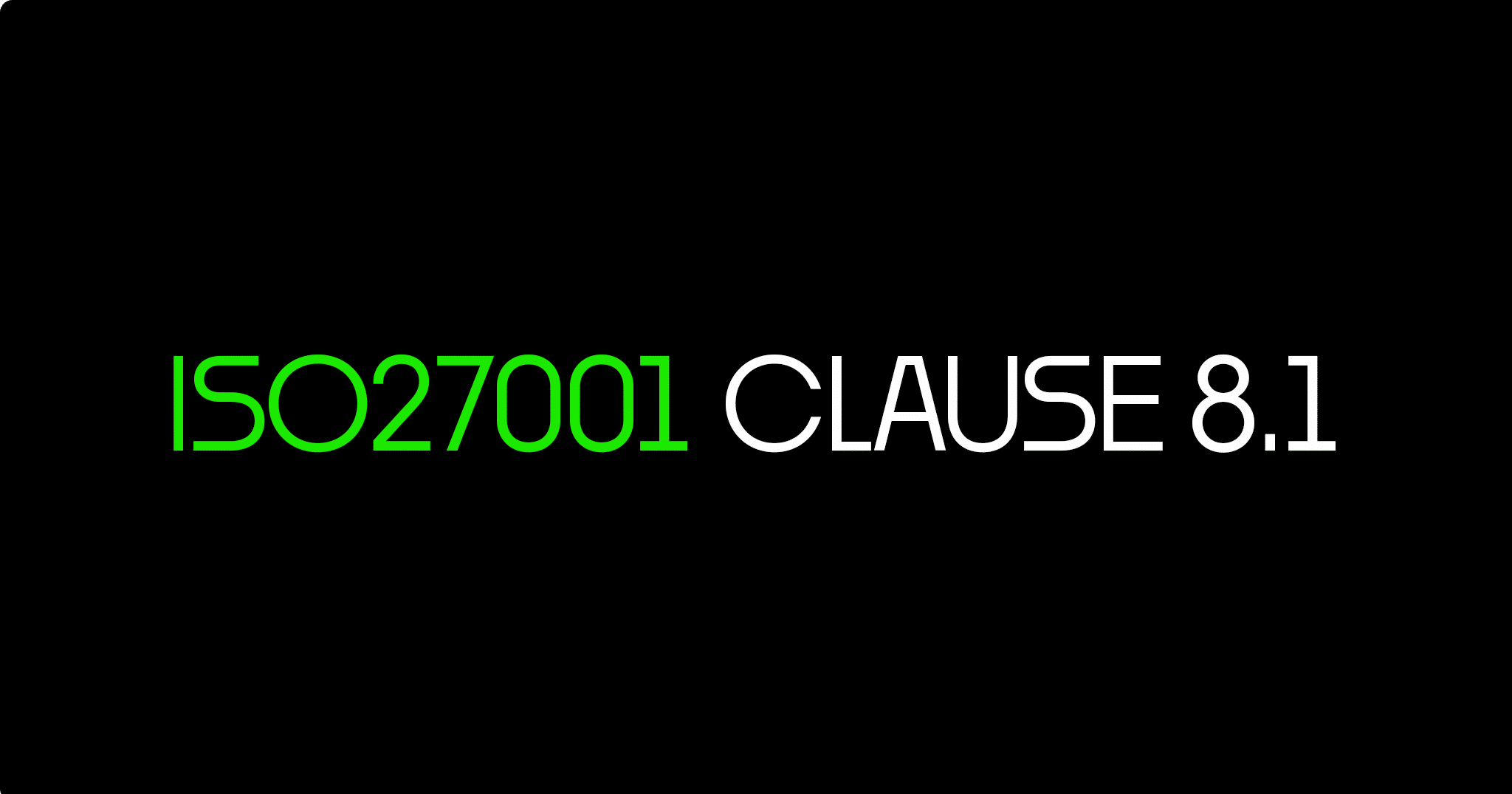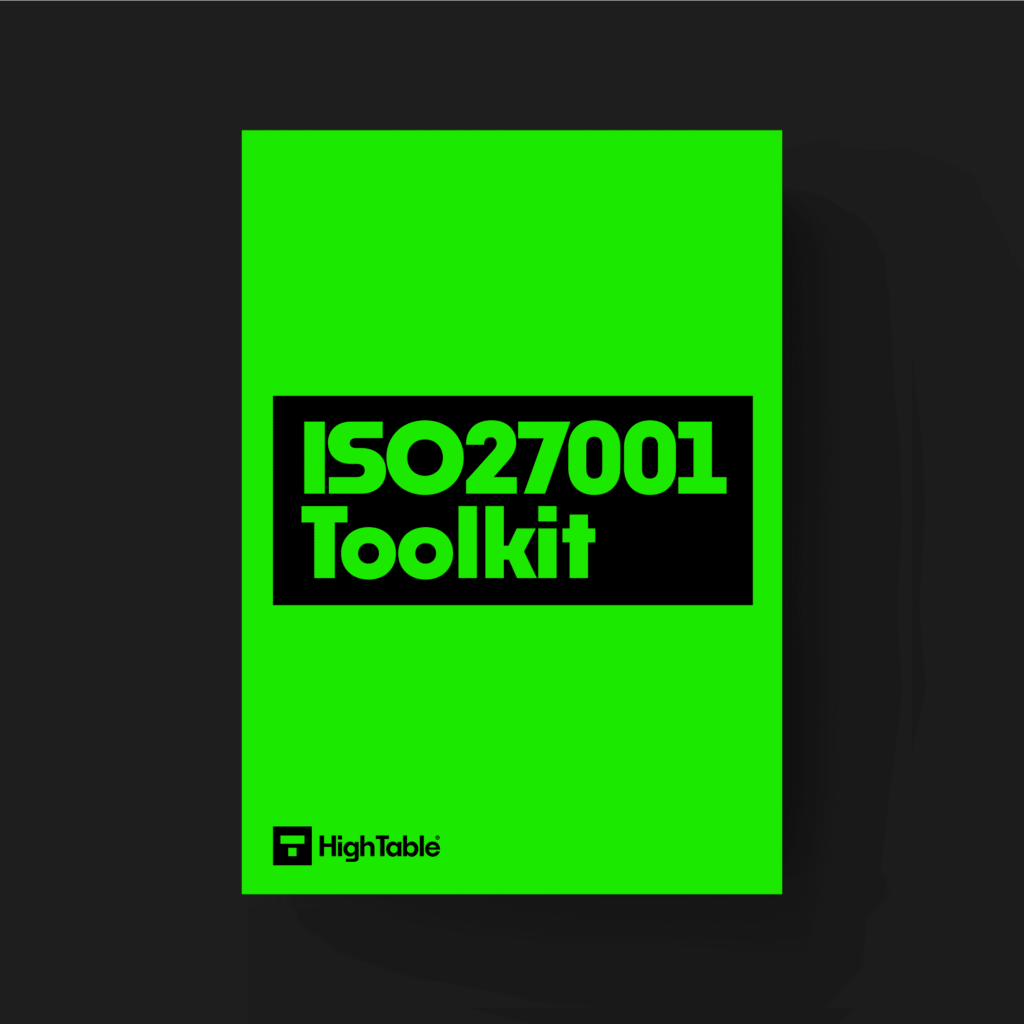ISO 27001 Operational Planning and Control
In this ultimate guide to ISO 27001 Clause 8.1 Operational Planning and Control you will learn
- What is ISO 27001 Clause 8.1
- How to implement ISO 27001 Clause 8.1
I am Stuart Barker, the ISO 27001 Ninja and author of the Ultimate ISO 27001 Toolkit.
With over 30 years industry experience I will show you what’s new, give you ISO 27001 templates, show you examples, do a walkthrough and show you how to implement it for ISO 27001 certification.
Table of contents
What is ISO 27001 Clause 8.1?
The ISO 27001 standard requires an organisation to plan, implement and control the processes needed to meet the requirements of Information Security.
So ISO 27001 Clause 8.1 Operational Planning and Control is all about processes. Document ISO 27001 operational processes, implementing ISO 27001 operational processes, running ISO 27001operational processes and being able to evidence that they are affective. ISO 27001 clause 8.1 also includes change management and outsourced process management.
ISO 27001 Clause 8.1 Definition
The ISO 27001 standard defines clause 8.1 as:
The organisation shall plan, implement and control the processes needed to meet information security requirements, and to implement the actions determined in clause 6 by
ISO 27001 Clause 8.1 Operational Planning and Control
– establishing criteria for processes
– implementing control of the processes in accordance with the criteria
Documented information shall be available to the extent necessary to have confidence that the processes have been carried out as planned.
The organisation shall control planned changes and review the consequences of unintended changes, taking action to mitigate any adverse effects, as necessary.
The organisation shall ensure that externally provided processes, products or services that are relevant to the information security management system are controlled
What are the ISO 27001:2022 Changes to Clause 8.1?
The changes to ISO 27001 Clause 8.1 in the 2022 update are clarification changes and nothing material.
The wording on planning and implementing and controlling processes is widened to the more general wording of ‘meet requirements’ rather than before which was ‘meet information security requirements’.
It now talks to establishing cirtieria for the processes and implementing control of processes in line with those criteria.
Rather than keep documented information it is changed to documented information shall be available.
Outsourced processes are determined and controlled is changed to externally provided processes, products or services that are relevant to the information security management system are controlled.
ISO 27001 Clause 8.1 Implementation Guide
There are many ways to document and evidence operational control. Consider the best methods for you.
When documenting operational processes you can have all your operational processes documented in one document called the Operations Manual (Ops Manual). This approach is great for smaller businesses.
Alternatively you can have many documents spread out in, and embedded in, the business and the operational areas where the processes are executed. This is more suited to a large organisation with teams and more people.
Consider it as a centralised or decentralised approach with the associated pros and cons of those kinds of implementation.
Finally there is always a hybrid approach where some processes are in the business but the ops manual remains the ‘shop window’ or the main reference point for those processes for management and control.
ISO 27001 Annex A Guidance on Operational Planning and Control
There is further guidance provided in the ISO 27001 Annex A Controls that was revised in 2022 with changes to the ISO 27002 standard and specifically calls out required operational processes. We are working to the principle that if it is not written down it does not exist so every process will need to be considered which in reality means that every control of the ISO 27001 Annex A will require a process to be covered by a process. We will not cover the entirety but to get a flavour, let’s take a look at a sample of what Annex A says.
ISO 27001 Annex A 5.24 Response to information security incidents
The organisation should plan and prepare for managing information security incidents by defining, establishing and communicating information security incident management processes, roles and responsibilities
ISO 27001 Annex A 5.24 Information security incident management planning and preparation
ISO 27001 Annex A 5.26 Response to information security incidents
Information security incidents should be responded to in accordance with the documented procedures.
ISO 27001 Annex A 5.26 Response to information security incidents
ISO 27001 Annex A 5.37 Documented operating procedures
Operating procedures for information processing facilities should be documented and made available to personnel who need them.
ISO 27001 Annex A 5.37 Documented operating procedures
ISO 27001 Annex A 5.32 Intellectual property rights
The organisation should implement appropriate procedures to protect intellectual property rights.
ISO 27001 Annex A 5.32 Intellectual property rights
This is usually the function of the legal department and part of good legal practice. Legal will have many requirements of their own but we are interested for ISO 27001 certification in ensuring that they have handled intellectual property rights as well as the legal register.
ISO 27001 Annex A 8.32 Change Management
Changes to information processing facilities and information systems should be subject to change management procedures.
ISO 27001 Annex A 8.32 Change Management
ISO 27001 Templates
ISO 27001 templates are a great way to fast track your implementation and leverage industry best practice.
DO IT YOURSELF ISO 27001
All the templates, tools, support and knowledge you need to do it yourself.
Watch the Tutorial
Watch How to implement ISO 27001 Clause 8.1 Operational Planning and Control
How to comply with ISO 27001 Clause 8.1
Time needed: 1 day
How to comply with ISO 27001 Clause 8.1 Guide to Operational Planning and Control
- Document all of your operational processes
In a document with appropriate mark up and version control document the operational processes of the business. Make sure you document what you do, not what you think an auditor wants to hear. You can only be audited against what you say you do so be sure you do it. Write clear and concise steps that anyone could follow to achieve the same process results and outcomes. Always include at least one exception step that covers what happens if a part of the process fails or does not operate as intended. You will need to document not only the information security processes but any process that covers the ISO 27001 in scope products and services. It is covered by the ISO 27001 scope statement then it needs documenting.
- Ensure your process documents are reviewed and approved
Process documents are part of the information security management system and they should be reviewed and approved and part of the review and approval cycle.
- Keep evidence of the process operating
When you come to the audit the auditor will want to see evidence of the operation of the process. This could be tickets in a ticket system, operational performance reports, copies of emails. What ever the artefacts referenced in the process are make sure that you can show copies of at least one of them.
- Audit your operation processes
You are required to audit your operational processes at least once annually and then based on need and business risk. Be sure that you have conducted the audit, documented and followed the continual improvement process.
- On Ending Employment / Engagement
Ensure that at the end of employment or the end of engagement that you communicate the contractual obligations that are, and will remain, in play in regards to information security.
- ISO 27001 Continual Improvement
Continually update your communication plan to respond to known threats, risks and issues.
- Implement Change Management
In line with the Change Management Policy and best practice document and implement a change management process ensuring that changes go through the process and you can evidence the operation of the change process at audit time.
- Implement Third Party Supplier Management
In line with the Third Party Supplier Policy and best practice document and implement a third party supplier process ensuring you have the controls and reporting mechanisms in place to the extent that you can evidence the operation of the supplier management process at audit time.
How do you demonstrate compliance to ISO 27001 clause 8.1?
It is very simple and straightforward to demonstrate compliance with ISO 27001 clause 8.1 operational planning and control.
Document all of your processes, have plans in place that you can evidence and have evidence of the processes operating as you have documented that they should.
ISO 27001 Clause 8.1 FAQ
The organisation shall plan, implement and control operational processes and keep evidence of their effective operation. In addition the organisation shall implement change management and third party supplier management.
You evidence compliance to the ISO 27001 Clause 8.1 by having written and documented processes and procedures in place that say exactly what you do and cover the requirements of the ISO 27001 standard. In addition you have records and evidence of the operation of those processes and procedures so you can evidence that you actually do what you say you and that it works as intended.
You can download ISO 27001 Clause 8.1 templates in the ISO 27001 Toolkit.
An example of ISO 27001 Clause 8.1 can be found in the ISO 27001 Toolkit.
No. You can document them in what ever way makes sense for your organisation. As long as they have the appropriate document mark up and controls in place.
Yes. As long as they say what you do and you can evidence that you do it that is fine.
You review them when ever anything changes and at least annually. When it comes to audit make sure that you can evidence they were reviewed at some point in the preceding 12 months to the audit. Can
The standard does not care as long as they are documented so do what works best for you and your organisation. We recommend one document for small to mid sized organisations.


